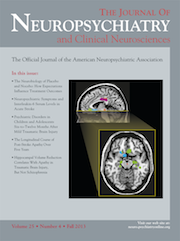To the Editor: There are two definitions for motor memory consolidation: 1) stabilization of long-term memory with the passage of time; and 2) off-line learning (i.e., improvement in performance after the training session).
1 Computational studies suggest that acquisition of a motor skill is probably obtained through learning an internal model of the dynamics of the task in the brain. It has been proposed that there are two types of internal models: Forward Models (FMs), which enable the CNS to predict the sensory consequences of motor commands, and Inverse Models (IMs), which produce motor commands to achieve a desired state. IMs act as the movement controllers. It is not yet known for certain how and where these models are formed and stored and which neural substrates are involved in motor memory consolidation.
Some theoretical and empirical works suggest that FMs are probably stored in the cerebellum.
2,3 Several studies show that IM plays a plausible role in the storage of newly-acquired motor memories; but eventual retention of these memories depends on a different neural system.
4–11 On the other hand, based on some other investigations on human,
12–15 animal
16 and functional imaging experiments,
2,17–19 it seems likely that the cerebellum is part of the system that maintains long-term motor memories (IMs).
Previous studies also show that susceptibility of long-term memory retention to interfering tasks is reduced by the consolidation process. Several studies showed that if two motor tasks are learned sequentially, there was no saving of the first task; but if the second task was learned 4–6 hours after the first one, saving of both tasks was observed.
20,21 These studies indicate that motor memory becomes more stable with the passage of time.
In this letter, we propose an idea about the way that motor memories may be consolidated in the brain. This idea is based on Ito's computational framework proposed for human thinking.
22 Ito’s framework presents a possible mechanism that explains explicit and implicit phases of thought.
We think that anatomical storage site of motor memories probably change as they stabilize, so that, by initial attentive training of a motor task (explicit phase), an inverse model is temporarily formed in IM, and an FM is formed in the cerebellum. With progression over time (maybe in 4–6 hours after the training session), the location of the inverse model in the brain shifts, probably to the cerebellum. After that, presenting a disturbance (e.g., using rTMS) over the IM has little or no effect on memory retention. This is consistent with the observation that when subjects received 15 minutes of rTMS over the area of M1 between the two practice sessions, memory retention was not observed in the second session. By contrast, if the 15 minutes of rTMS over M1 was given 6 hours after the first practice session, it had little or no effect on memory retention.
4Since IM acts as a controller and is responsible for generating proper motor commands, the more complete the IM is, the better motor commands are generated, and so subjects’ performance will be better. We propose that when the subject stops training, the moving body part (i.e., the controlled object) is replaced by FM, and so improving IM can continue using the internal feedback from FM (the implicit phase of motor learning). This will result in improving subject performance after explicit training and explain the way by which off-line learning happens.
Our proposed hypothesis can explain some of the observations related to motor memory consolidation; however, special experimental research is surely required for further investigations and validation.

